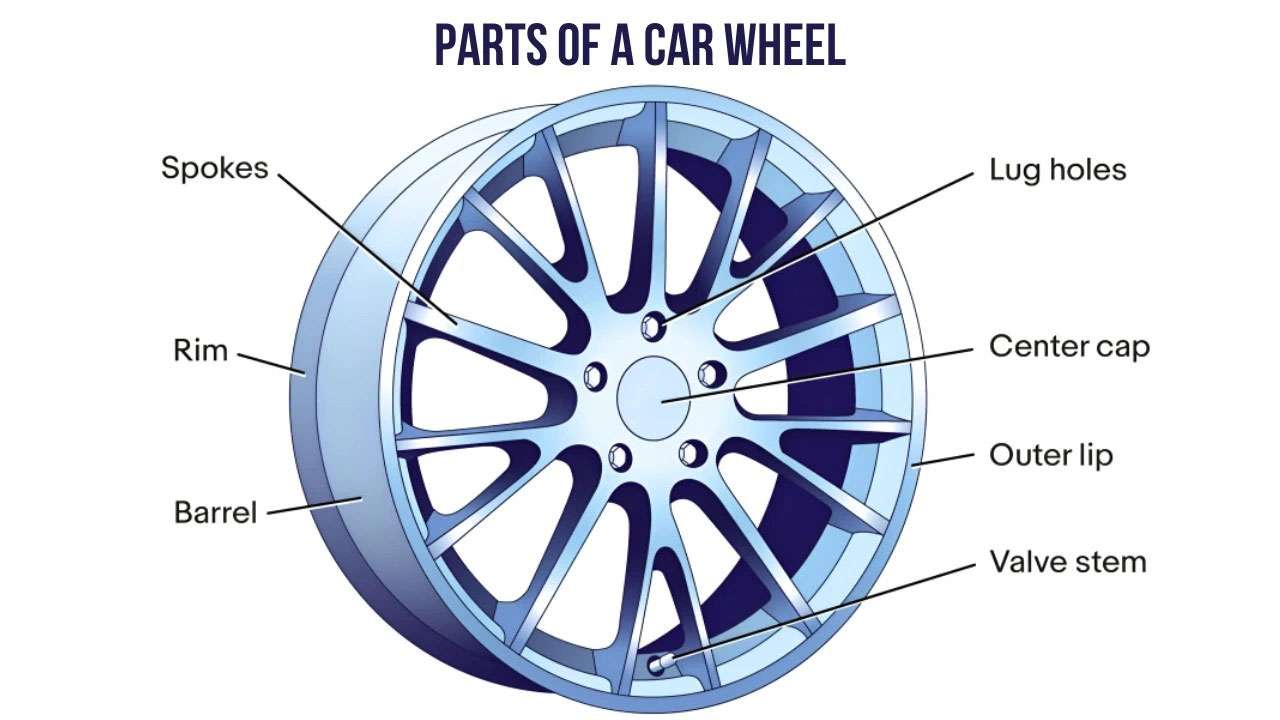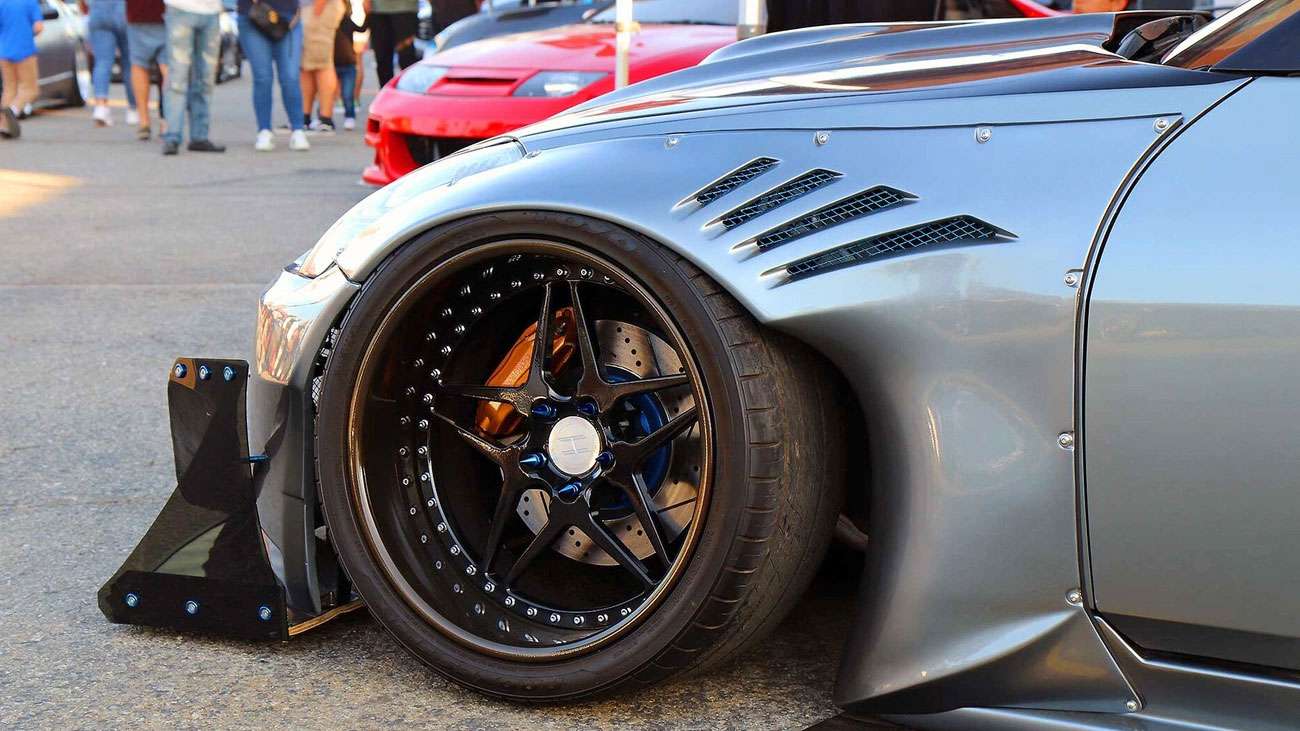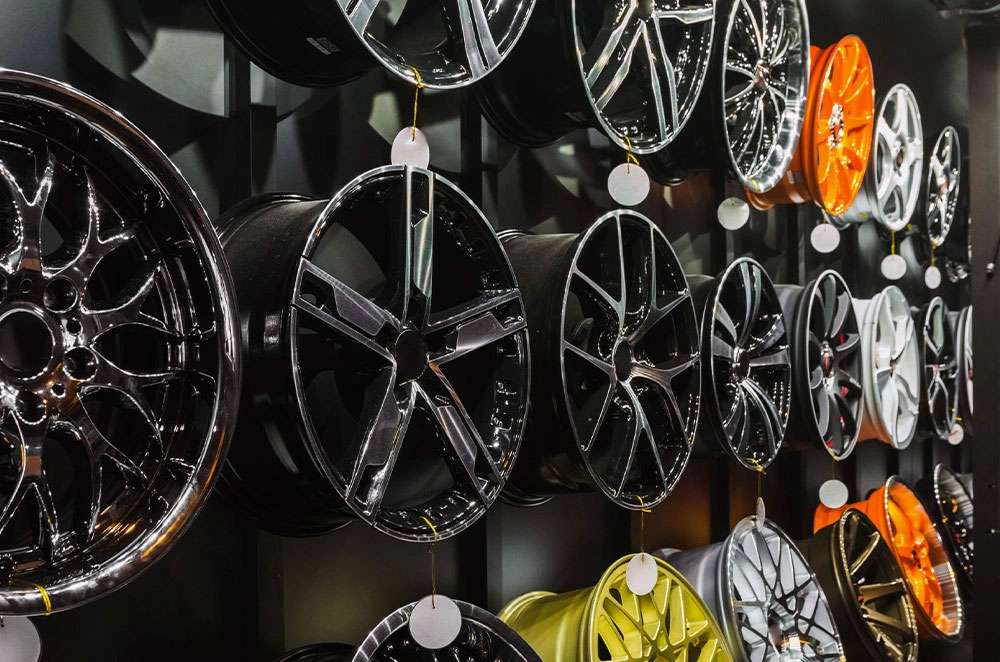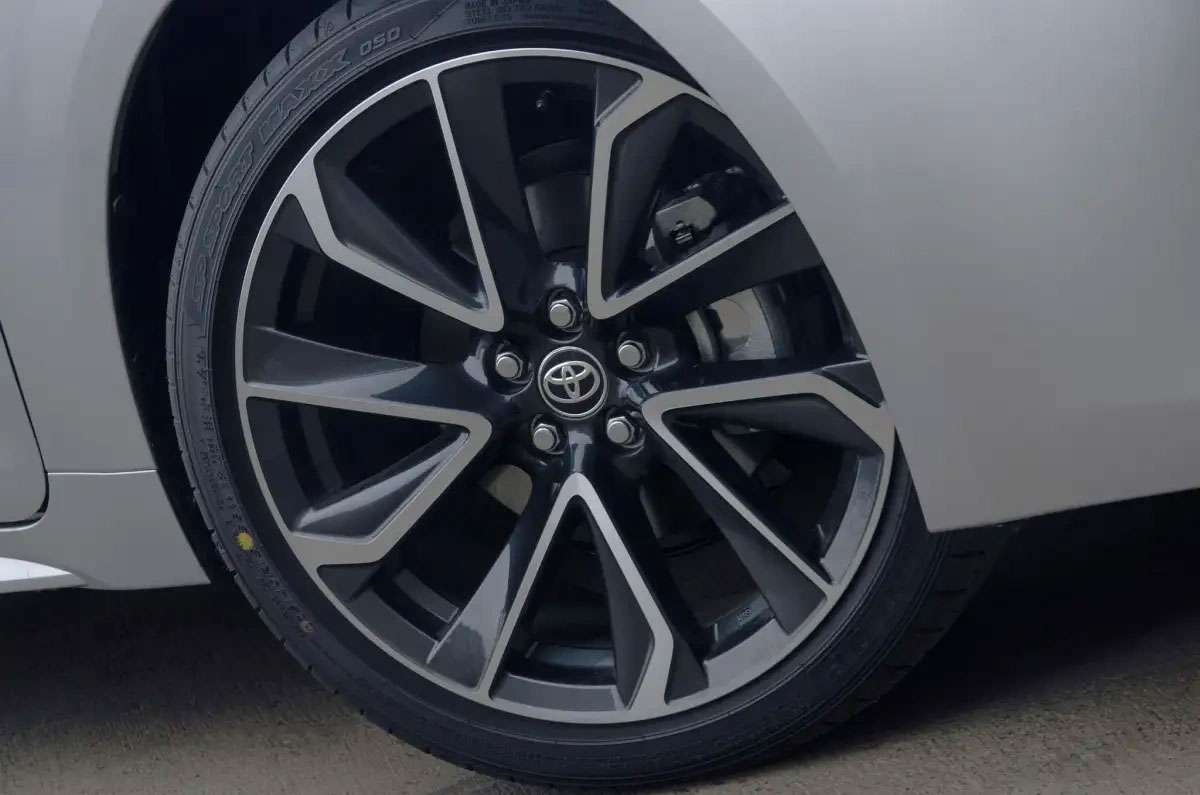Wheels might look straightforward, but they're actually one of the trickiest parts to get right when you're upgrading your ride. Sure, they're round, they spin, and they hold your tires – but that's where the simplicity ends. After helping thousands of customers over the years, we've seen the same mistakes happen again and again, often before people even start shopping.
Here's something that trips up almost everyone: the whole wheels versus rims debate. The truth is, most folks use these words like they mean different things, but they really don't – it's just regional preference, like saying "soda" or "pop". This confusion costs people money and leads to poor choices. Your driving style should drive your decision. Street cruising with those eye-catching 22s or 24s? Go for it. Planning to tackle rocky trails? You'll want the smallest diameter wheels you can find.
This guide cuts through the confusion. We'll explain what actually matters when choosing wheels, share the mistakes we see customers make (so you can avoid them), and give you our tried-and-tested process for finding wheels that fit your vehicle, your budget, and your driving needs perfectly.

Image Source: The Engineering Choice
Walk into any tire shop and you'll hear people mixing up "wheels" and "rims" constantly. Even seasoned mechanics slip up sometimes. This isn't just semantics – the confusion actually costs customers money and creates real problems down the road.
Here's the simple truth: a rim is just one component of a wheel – think of it like the crust on a pizza, not the whole pie. The wheel is everything you see when you look at your car from the side. The rim? That's specifically the outer edge where your tire sits.
Look closely at any wheel and you'll spot the rim's distinctive U-shape. This curved design does the heavy lifting – it grabs onto your tire's bead and keeps all that air sealed inside. Without this perfect fit, you'd be dealing with flat tires constantly.
Your wheel assembly includes way more than just the rim:
The hub connects everything to your car's axle
Lug holes secure the wheel to your vehicle
Spokes link the center to the outer edge
Valve stem hole for inflation
Center cap (on most designs)
The rim size determines what tires you can run, but the entire wheel affects how your car handles, looks, and performs.
This mix-up didn't happen overnight. Different parts of the country just developed their own preferences – some folks grew up saying "rims," others said "wheels." Neither group was wrong, exactly.
The aftermarket scene made things even muddier. "Check out my new rims" sounds cooler than "Look at my wheel assemblies," right? Car enthusiasts latched onto the slang, and pretty soon everyone was using it. It's like calling all tissues "Kleenex" – technically incorrect, but everyone knows what you mean.
The industry went along with it because, honestly, customers were happy and sales kept rolling. But this casual approach to terminology created problems nobody saw coming.
This confusion hits your wallet when you're shopping for wheels. Most people buy them for two reasons: replacing damaged ones or making their ride look better.
When you don't know the difference, you might focus only on how the visible part looks while ignoring the wheel's crucial performance specifications. That's like buying a car based only on the paint job.
Getting the terms wrong can lead to:
Buying parts that don't fit your vehicle
Missing critical measurements like offset and backspacing
Choosing wheels that hurt your car's handling
Creating safety risks with improper fitment
This matters most when you're shopping aftermarket. Since rim dimensions control tire compatibility, understanding what you're actually buying helps you avoid expensive mistakes and keeps your car running safely.
The bottom line? Knowing the difference between wheels and rims isn't about impressing people with technical knowledge – it's about making smart purchases that work for your specific needs.

Image Source: MotorTrend
After years of helping customers fix wheel problems they didn't see coming, certain mistakes keep showing up. These five slip-ups cause more headaches, wasted money, and safety issues than anything else we encounter.
Those Instagram-worthy oversized wheels might grab attention, but they'll also grab your wallet – and not in a good way. We see this constantly: customers fall in love with a look without thinking about how it'll actually drive. That aggressive stance comes with real consequences. Your daily commute becomes rougher, your gas mileage drops, and those potholes you used to cruise over? They'll rattle your teeth now.
The problem isn't wanting your ride to look good – it's forgetting that wheels are working parts first, show pieces second.
Offset and backspacing measurements sound like boring tech specs, but get them wrong and you're in for expensive problems. Offset measures how far your wheel's mounting point sits from its center, while backspacing tells you the distance from that mounting point to the wheel's back edge. These numbers determine whether your wheels sit properly or cause major issues.
Too much negative offset? Your wheels stick out like sore thumbs, stress your bearings, and might even make your car illegal for street use. Wrong backspacing often means tires rubbing against your fenders or suspension parts – a recipe for damage and dangerous handling.
Wheels and tires work as a team, but too many people shop for wheels like they're standalone accessories. Pick the wrong combination and you'll deal with rubbing, fender damage, and suspension problems that could've been avoided.
Hookless rims present special challenges since they rely entirely on tire bead tension and friction rather than a traditional lip. These setups demand precise attention to inflation pressures and rim width specifications – there's no room for guessing.
The material makes a massive difference in how your wheels perform and how long they last. Steel wheels cost less and take abuse well, but they're heavy. Aluminum wheels offer better performance and looks, though strength varies depending on whether they're cast, forged, or rotary forged.
Carbon fiber wheels excel on the track but can shatter if you hit something hard. Magnesium wheels corrode quickly and have limited lifespans, making them poor choices for daily drivers. Match the wrong material to your needs and you'll either overpay or underperform.
This mistake can literally be life-threatening. Federal law requires wheels to be crack-free with properly round bolt holes. Missing or loose lug nuts are also illegal – and deadly.
Local regulations often restrict wheel sizes, offsets, and modifications for good reason. Ignore these rules and you risk failing inspections, getting tickets, or worse – causing accidents. Don't forget that changing tire and wheel sizes throws off your speedometer, which can lead to unintentional speeding tickets.
The bottom line? Great-looking wheels that fit properly and meet safety standards aren't just possible – they're what you should expect. Taking time to understand these basics protects your investment and keeps you safe on the road.
The difference between a great wheel upgrade and a costly headache often comes down to three key measurements. After working with customers on countless wheel selections, these specifications determine whether your new wheels will enhance your vehicle's performance or create problems you didn't see coming.
Diameter gets measured in inches, and it affects way more than just how your wheels look. Bigger wheels do give you better stability since they cover more ground, but here's the catch – they'll also slow down your acceleration. Most people don't expect this trade-off.
Go larger on diameter and you'll notice some immediate changes. Your braking distance typically gets shorter, which sounds great until you realize the ride gets harsher because those big wheels transfer every road imperfection straight to your seat. Plus, your gas mileage suffers since your engine has to work harder spinning heavier wheels.
There's an interesting upside though – larger wheels can help you hit higher top speeds, even if it takes longer to get there. That's why sports cars don't just max out wheel size; they find the sweet spot. For daily driving, balance matters most, especially when you factor in the extra road noise and heavier steering that comes with oversized wheels.
Wheel width determines which tires will actually work with your setup. Every tire size comes with manufacturer specs for compatible rim widths, and stepping outside that range can create performance issues or safety concerns.
Wider wheels boost traction by increasing the contact patch between tire and road. Sounds perfect, right? Well, that extra grip also means more rolling resistance, so your engine works harder and fuel economy can take a hit.
Here's how to get it right: look at your tire size – that first number like "185" in 185/55R15 – and match it against the manufacturer's recommended rim width guidelines. You'll typically find an "optimal" range and a broader "acceptable" range, though stepping outside optimal usually means giving up some performance.
Offset measures the distance in millimeters between your wheel's mounting surface and its centerline. Positive offset means the mounting surface sits toward the wheel's face, while negative offset pushes it toward the back.
Backspacing covers the same concept but measures in inches from the mounting surface to the wheel's inner edge. Different measurement systems, same basic idea – they both determine where your wheel sits relative to your vehicle.
Get these numbers wrong and you'll face real problems. Extreme negative offset makes wheels stick out too far, putting extra stress on wheel bearings. Go too positive and wheels tuck in close to suspension parts, potentially creating clearance headaches.
Want to convert between the two? Take an 8-inch wide wheel with +0mm offset – its backspacing equals 4 inches (half the width). This relationship helps when you're comparing wheels that use different measurement standards.

Image Source: AutoDeal
The material your wheels are made from affects everything - how they perform, how long they last, and what you'll pay for them. Here's what you need to know about each type so you can pick the right ones for your situation.
Cast wheels are made by pouring hot aluminum into molds, and they're everywhere for good reason. They give you solid performance upgrades without emptying your wallet. Cast aluminum alloy wheels hit that sweet spot between better performance and reasonable cost, which is why so many people choose them when upgrading from steel wheels.
The trade-off? They're heavier than some other options, which can hurt your acceleration and gas mileage a bit. Plus, the cooling process sometimes creates tiny air pockets in the metal that can turn into cracks if you really abuse them.
Forged wheels start as solid aluminum blocks that get hammered with incredible force - we're talking over 10,000 tons of pressure. This intense process squeezes and realigns the metal's structure, creating wheels that are both stronger and lighter than cast wheels.
This manufacturing method lets you get wheels that weigh much less than cast ones while being incredibly tough. The downside? You'll pay for that quality - forged wheels typically start around $900 each.
Flow-formed wheels give you some of the benefits of forged wheels without the hefty price tag. The process starts with a cast wheel that gets spun at high speed while heated, stretching and compressing the aluminum to make a stronger barrel.
You'll get wheels that are about 15-25% lighter than regular cast wheels with better impact resistance and load capacity. If you want better performance but can't justify forged wheel prices, flow-formed wheels are worth considering.
Here's how to match wheel materials to your driving:
Daily driving: Cast wheels handle regular commuting and occasional light off-roading just fine
Weekend fun: Flow-formed wheels give you better handling without the premium price
Track days: Forged wheels offer the best strength-to-weight ratio for serious performance driving
Off-road adventures: Forged wheels take hits from rocks and rough terrain better than other options
Your budget, driving style, and what you do with your vehicle should guide your choice. No point paying for forged wheels if you're just commuting to work, but don't skimp on quality if you're hitting the trails every weekend.

Image Source: www.icartea.com
Shopping for wheels isn't as simple as picking the prettiest design and calling it done. With so many options out there these days, you need a game plan to avoid costly mistakes and find wheels that actually work for your situation.
Your vehicle type tells you a lot about what kind of wheels you need. Trucks and SUVs need wheels built tough enough to handle heavy loads – don't skimp on durability here. Passenger cars benefit most from lightweight alloy wheels that cut down on unsprung weight and make your car handle better. Before you fall in love with any particular wheel, double-check compatibility using your vehicle's year, make, model, and sometimes even the trim level to nail down the right OEM wheel size.
Think about where you actually drive, not where you wish you drove. Off-road folks should go smaller on wheel diameter – you want more sidewall to cushion those impacts and protect your wheels from damage. Highway cruisers can get away with larger wheels that fill out the wheel wells nicely, though you'll trade some ride comfort for looks. If you're serious about off-roading, look for wheels with beefed-up sidewalls that can take a beating from rocks and debris.
Safety isn't negotiable. Every wheel needs to meet DOT standards – that means no cracks, no breaks, and bolt holes that aren't stretched out of shape. New vehicle wheels must carry the DOT symbol and proper markings. Interestingly, refurbished wheels for used trailers get a pass on marking requirements since they're considered used.
Both routes have their perks. Online gives you access to over 60 brands of aftermarket wheels that most local shops can't match. Visit our Full Wheels page for the best selection. Online retailers tap into hundreds of warehouses nationwide, so inventory isn't usually an issue. Local shops counter with services you can't get online – lifetime balancing, rotation, and flat repairs that can save you money down the road. Your choice boils down to whether you value selection and price or prefer having a local shop you can count on for ongoing service.
Getting the right wheels doesn't have to be rocket science, but it definitely takes more thought than most people give it. We've walked through the terminology mix-ups that trip everyone up, the specs that actually matter, and the materials that work best for different driving styles. Most importantly, we've shown you the mistakes that cost people money and headaches down the road.
Here's what it boils down to: those three key measurements—diameter, width, and offset—determine everything about how your wheels will work with your vehicle. Pick wheels just because they look cool, and you might end up with handling issues, poor fuel economy, or worse. But match them to how and where you actually drive? That's when you get wheels that look great and perform even better.
Don't skip the boring stuff like checking your vehicle specs, thinking about your typical driving conditions, and making sure everything meets safety requirements. Visit our Full Wheels page for the best selection. Yeah, it might feel like a lot to keep track of at first, but getting it right the first time beats dealing with problems later.
You've got the knowledge now to walk into any wheel purchase knowing exactly what questions to ask and what details matter. The right wheels don't just change how your ride looks—they change how it feels every time you're behind the wheel. Take your time, stick to what we've covered here, and you'll end up with wheels that work as hard as they look good.
Understanding proper wheel selection goes beyond esthetics—it directly impacts your vehicle's safety, performance, and longevity. Here are the essential insights every buyer needs:
• Function trumps style: Prioritize wheel specifications like offset, backspacing, and material over appearance to avoid handling issues and safety hazards.
• Know the terminology: Wheels are complete assemblies; rims are just the outer edge where tires mount—this distinction affects buying decisions.
• Match material to usage: Cast wheels suit daily driving, flow-formed offer performance value, and forged wheels excel in racing or off-road conditions.
• Verify DOT compliance: Always ensure wheels meet safety standards and are properly marked before purchase to avoid legal issues.
• Consider your terrain: Smaller wheels with more sidewall work better off-road, while larger wheels enhance highway performance but reduce comfort.
The key to successful wheel selection lies in balancing your vehicle's specifications, driving needs, and safety requirements rather than choosing based solely on visual appeal.
Q1. Why do different trim levels of the same vehicle often have different wheel sizes? Higher trim levels typically feature larger wheels with lower-profile tires for improved handling and a more premium look. Lower trims may have smaller wheels with taller sidewalls for a smoother ride and lower cost.
Q2. How does changing wheel size affect a vehicle's performance? Larger wheels generally improve handling and stability but can reduce acceleration and fuel efficiency due to increased weight. They may also result in a firmer ride. Smaller wheels typically provide better acceleration and a smoother ride but may compromise cornering ability.
Q3. Can I put different sized wheels on my car than what came from the factory? Yes, but it's crucial to maintain the overall diameter close to the original specification. Significant changes can affect speedometer accuracy, suspension geometry, and clearance. Always consult a professional to ensure compatibility and safety.
Q4. What's the difference between cast, forged, and flow-formed wheels? Cast wheels are the most common and affordable but heaviest. Forged wheels are the strongest and lightest but most expensive. Flow-formed wheels offer a middle ground, with better strength-to-weight ratio than cast wheels at a more moderate price point.
Q5. How do I choose the right wheels for my vehicle and driving needs? Consider your primary driving conditions (city, highway, off-road), performance goals, budget, and vehicle specifications. Ensure the wheels meet safety standards and are compatible with your vehicle's suspension and braking systems. Consult with a professional if unsure about fitment or performance implications.
